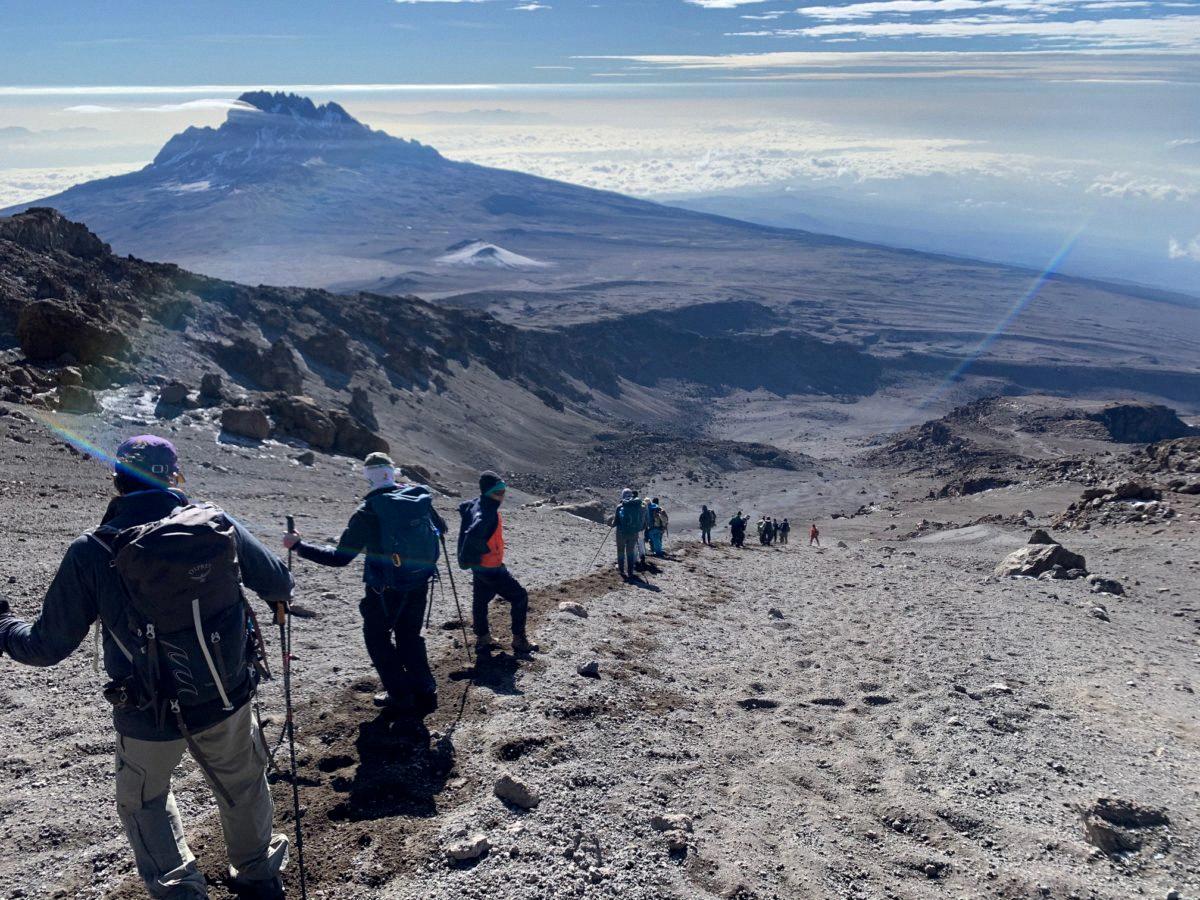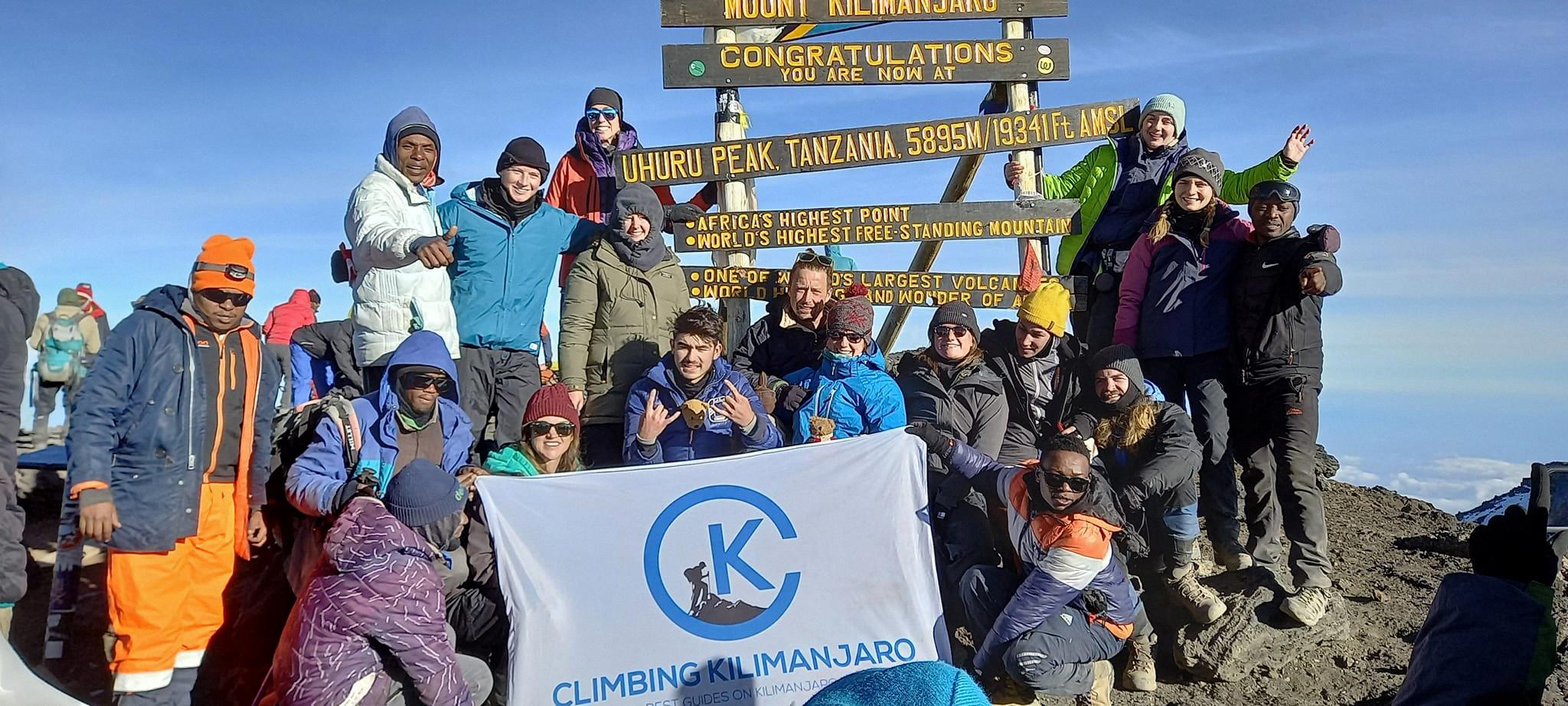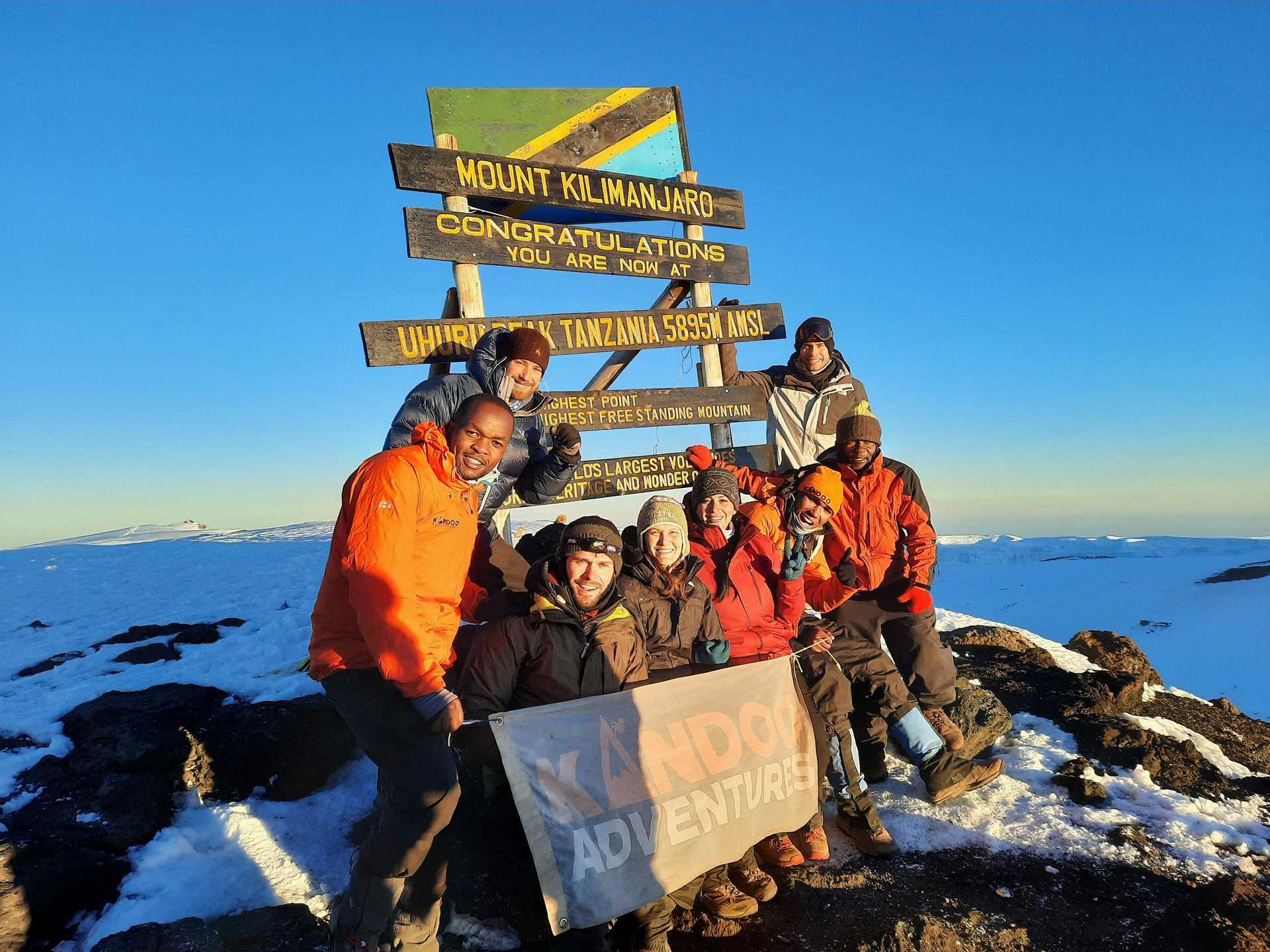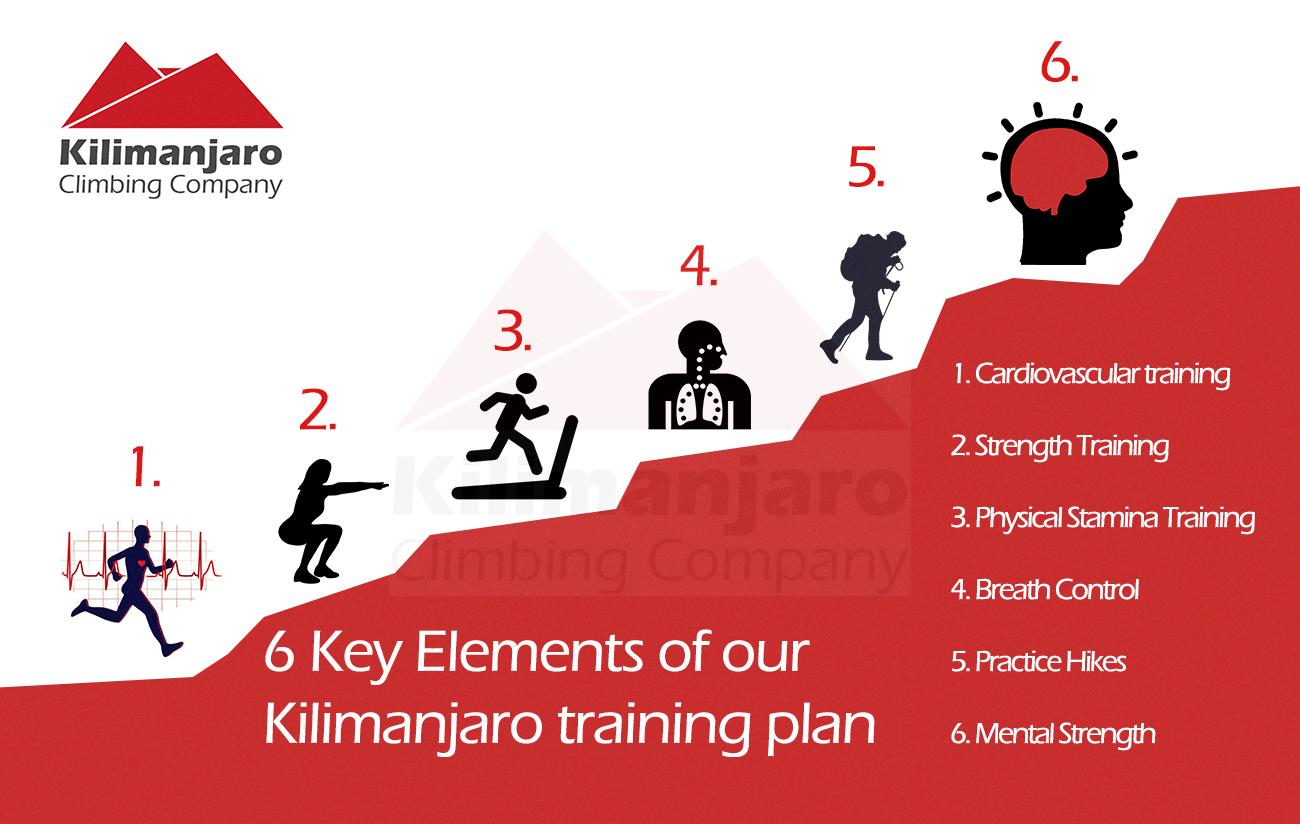Welcome to our comprehensive guide on climbing Kilimanjaro! Kilimanjaro is the highest mountain in Africa, and it’s a dream for many adventure seekers to conquer. However, climbing Kilimanjaro is not an easy task, and it requires proper training and preparation to reach the summit.
In this blog post, we’ll discuss everything you need to know about Kilimanjaro, including how to train for it. So, without further ado, let’s dive in!
About Kilimanjaro
Kilimanjaro is a dormant volcanic mountain, located in Tanzania, East Africa. It’s the highest peak in Africa, standing at 19,341 feet (5,895 meters) above sea level. Climbing Kilimanjaro is a unique experience that requires physical and mental endurance, as well as proper preparation.
Training for Kilimanjaro
Training for Kilimanjaro should start at lest three to four months before your scheduled climb. The training should be progressive and aim to build endurance, strength, and stamina. Here are some tips to help you train for Kilimanjaro:
1. Cardiovascular Training
Cardiovascular training is essential for Kilimanjaro, as it will help you build endurance and stamina. You can start with low-impact exercises such as jogging, cycling, or swimming, and gradually increase the intensity and duration of your workouts.
2. Hill and Stair Climbing
Hill and stair climbing are crucial for Kilimanjaro, as it simulates the terrain you’ll encounter on the mountain. Try to find hills or stairs in your area and incorporate them into your training. You can also use a stair machine or a treadmill set on an incline.
3. Strength Training
Strength training is essential for Kilimanjaro, as it will help you build the necessary muscle mass to carry a backpack and withstand the altitude. Focus on exercises that target your legs, core, and upper body, such as squats, lunges, deadlifts, and push-ups.
4. Altitude Training
Altitude training is crucial for Kilimanjaro, as it helps your body acclimatize to the high altitude. You can simulate altitude training by using an altitude training mask, sleeping in an altitude tent, or hiking at higher altitudes.
5. Proper Nutrition
Proper nutrition is essential for Kilimanjaro, as it will help you fuel your body and recover from your workouts. Focus on eating a balanced diet that includes lean protein, complex carbohydrates, and healthy fats. Make sure to stay hydrated by drinking plenty of water.
Conclusion
Climbing Kilimanjaro is a unique experience that requires proper preparation and training. Remember to start training at least three to four months before your scheduled climb, and focus on building endurance, strength, and stamina. Incorporate hill and stair climbing, strength training, altitude training, and proper nutrition into your training program. With proper preparation, you can conquer Kilimanjaro and experience the awe-inspiring beauty of Africa’s highest peak.
How Long Does it Take to Train for Climbing Kilimanjaro?
Training to climb Kilimanjaro requires a significant amount of physical preparation and conditioning. Generally, most individuals will need to dedicate at least three to four months of training specifically for climbing Kilimanjaro. During this time, you will gradually increase the duration, distance, and elevation gain of your hikes to build up your trekking-specific fitness and endurance. It is recommended to increase your training intensity by approximately 10% each week to safely and effectively build your physical fitness. With proper training and preparation, you can increase your chances of successfully reaching the summit of Kilimanjaro.
Source: iantaylortrekking.com
Getting in Shape to Climb Kilimanjaro
If you are planning to climb Kilimanjaro, it is important to get in shape to ensure a successful and enjoyable climb. The best way to prepare for the climb is to engage in regular physical exercise that focuses on building your endurance, strength and flexibility.
Firstly, you should start with cardiovascular exercises such as jogging, cycling, or swimming. These exercises will help you build your endurance and stamina, which are essential for the long hikes up the mountain. You should aim to do these exercises for at least 30 minutes to an hour, at least three to four times a week.
Secondly, you should focus on strength training exercises such as squats, lunges, and calf raises to help build the muscles you will use during the climb. You can also use weights or resistance bands to make these exercises more challenging. Strength training exercises should be done at least twice a week.
Lastly, you should incorporate flexibility exercises such as yoga, stretching or Pilates into your routine. These exercises will help you improve your balance, flexibility and reduce the risk of injury. You should aim to do these exercises at least once or twice a week.
In addition to regular exercise, it is also important to maintain a healthy diet and stay hydrated. You should aim to drink at least 2-3 liters of water per day and eat a balanced diet that includes carbohydrates, protein, and healthy fats.
Remember to start your training early, and gradually increase the intensity and duration of your workouts over time. You should also consider taking regular hikes in hilly or mountainous areas to help you build the specific muscles needed for the climb.
By following these tips, you will be well on your way to geting in shape for your Kilimanjaro climb and achieving your goals on this incredible adventure.
Can Beginners Climb Kilimanjaro?
A beginner can climb Kilimanjaro. However, it is important to note that climbing Kilimanjaro is a challenging and physically demanding activity, therefore, proper preparation and planning are crucial. Before embarking on this journey, it is important to research and understand the conditions, seasonal climates, costs, and requirements for climbing Kilimanjaro. This will help you to better prepare yourself mentally and physically for the challenge ahead.
One important factor to consider is the route you will take to climb Kilimanjaro. Some routes are more challenging than others, and it is recommended that beginners choose a route that is less strenuous. The Marangu and Rongai routes are considered to be the easiest routes to climb, whie the Machame and Lemosho routes are more challenging.
It is also important to ensure that you have the proper gear and equipment, such as sturdy hiking boots, warm clothing, sleeping bag, and a backpack. Additionally, it is recommended that you engage in physical training and conditioning to prepare your body for the altitude and strenuous activity.
With proper preparation and planning, a beginner can successfully climb Kilimanjaro and have a rewarding and unforgettable experience.
The Benefits of Altitude Training for Climbing Mount Kilimanjaro
Altitude training is highly recommended for Kilimanjaro. The high altitude of Kilimanjaro can cause altitude sickness, which can be serious and even life-threatening. Altitude training helps your body to acclimatize to high altitude by increasing the production of red blood cells, which carry oxygen to your muscles and organs. This helps to reduce the risk of altitude sickness and allows you to perform better at high altitude. We recommend a simulated altitude of 10,500 feet for 6-8 weeks before your Kilimanjaro climb to properly pre-acclimatize your body. This can be achieved throgh a variety of methods such as sleeping in an altitude tent, using an altitude training mask or spending time at high altitude locations. It is important to consult with a healthcare professional before starting any altitude training program to ensure it is safe for your individual health and fitness level.
Climbing Kilimanjaro: Do You Need Oxygen?
Supplemental oxygen is not necessary to climb Kilimanjaro or reach its summit. While the altitude of Kilimanjaro presents a significant challenge, climbers can acclimatize to the altitude by walking slowly and taking time to rest at lower elevations. This acclimatization method involves climbing gradually, sleeping at lower elevations, and allowing the body to adapt to the decrease in oxygen levels. Climbers are encouraged to take their time and ascend slowly, kown as the “pole pole” method, to reduce the risk of altitude sickness and improve their chances of reaching the summit successfully. Therefore, climbers do not need to carry supplemental oxygen with them when climbing Kilimanjaro.
Source: climbing-kilimanjaro.com
Inexperienced Climbers and Kilimanjaro: Can They Climb It?
Inexperienced climbers can climb Kilimanjaro. Kilimanjaro is considered a “walk-up” peak, meaning that it doesn’t require any technical climbing skills or equipment such as ropes, harnesses, or ice axes. However, it is important for inexperienced climbers to understand that Kilimanjaro is stll a physically demanding climb and requires a good level of fitness and preparation. It’s recommended that climbers undergo a training program prior to attempting to climb Kilimanjaro, which should include cardiovascular and strength training exercises. Additionally, it’s important to choose a reputable tour operator that provides experienced guides, proper equipment, and a well-planned itinerary to ensure a safe and successful climb. with the right preparation and support, inexperienced climbers can successfully climb Kilimanjaro.
What I Wish I Had Known Before Climbing Kilimanjaro
If you’re planning on climbing Kilimanjaro, there are a few things that you should be aware of beforehand to ensure that you’re fully prepared for the climb. Firstly, it’s important to note that every single camp is cold, and it can be difficult to get a good night’s sleep due to the chilly temperatures. As a result of the cold, your skin and lips may take a beating, so it’s a good idea to pack plenty of moisturizer and lip balm to keep them hydrated.
Another thing to be aware of is that you’ll need to pee frequently while on the climb. This is beause your body is working hard to acclimatize to the altitude, and as a result, you’ll be drinking a lot of water. It’s important to stay hydrated, but it can be tricky to find a private spot to go to the bathroom while on the mountain.
On summit day, the water in your hydration pack may freeze due to the extreme temperatures, so it’s important to bring along a few extra water bottles to ensure that you stay hydrated. Additionally, some climbers may feel “off” when high up the mountain due to the altitude, so it’s important to listen to your body and take breaks as needed.
Before climbing Kilimanjaro, it’s important to be aware of the cold temperatures, frequent need to pee, potential skin and lip damage, hydration challenges, and altitude sickness. By being prepared for these challenges, you can increase your chances of a successful climb and an unforgettable experience.
Fitness Level Required for Climbing Kilimanjaro
Kilimanjaro is graded as a strenuous climb, which means that it requires a significant level of physical fitness. The climb is a multi-day trek that involves long days of walking and ascending at high altitude. Therefore, if you are planning to climb Kilimanjaro, it is recommended that you have prior experience of multi-day trekking or walking trips. Additionally, you will need to have a good level of cardiovascular fitness, strength, and endurance to cope with the physical demands of the climb. It’s essential to prepare yourelf mentally and physically for the challenge ahead to increase your chances of reaching the summit.
Average Daily Walking Distance on Mount Kilimanjaro
The distance covered each day on Kilimanjaro varies depending on the route and the itinerary chosen. However, on average, trekkers cover a distance of 11.2 miles/18.1km on the final ascent to the summit. This involves a trek of around 12-14 hours, covering a vertical ascent of either 1,245m/4,084 feet from Barafu or 1,095m/3,592 feet from Kosovo Camp to the summit. After reaching the summit, trekkers then face a descent of 2,795m/9,169 feet, all in the same day. It is worth noting that the trek on Kilimanjaro is a physically demanding challenge, and it is essential to be well-prepared and in good physical condition before embarking on the climb.
Source: kandooadventures.com
The Cost of Climbing Mount Kilimanjaro
Climbing Kilimanjaro can be considered expensive, with the average cost ranging from $2000 to $6000 depending on the tour operator and package chosen. It’s important to note that there are unavoidable fixed costs associated with organizing a climb, such as park fees, permits, and equipment, which contribute to the overll cost. However, it’s also crucial to be wary of extremely cheap packages as they may not include necessary safety measures, experienced guides, and adequate equipment, which can compromise the quality of the climb and potentially put your safety at risk. Therefore, when considering the cost of climbing Kilimanjaro, it’s important to prioritize safety and quality over a low price.
Comparing the Difficulty of Climbing Mount Kilimanjaro and Mount Everest
When it comes to comparing Kilimanjaro and Everest, it’s worth noting that both treks have their own unique challenges. However, most experts and experienced trekkers agree that Kilimanjaro is harder than Everest Base Camp.
One of the main reasons for this is the summit night on Kilimanjaro, which involves a steep and grueling ascent to the peak. At an elevation of over 19,000 feet, the air is thin and the terrain is rocky and challenging. This makes the climb physically demanding and mentally exhausting, and it takes a toll on even the fittest and most experienced trekkers.
In contrast, Everest Base Camp trek is a longer and more gradual climb, with feer steep ascents and descents. However, the altitude is a major factor on this trek, as you will be trekking above 18,000 feet for several days. This can lead to altitude sickness, which is a serious health risk that requires careful acclimatization and preparation.
Both Kilimanjaro and Everest Base Camp treks require physical fitness, mental toughness, and careful planning. However, for most people, Kilimanjaro is considered to be the harder of the two treks, primarily due to the challenges of summit night.
The Easiest of the Seven Summits
Interestingly, Mount Everest, which stands at a towering height of 29,029 feet and is the highest mountain peak in the world, is considered to be the least difficult of the Seven Summits. This is because, despite its massive size, it has a relatively straightforward route to the summit, knwn as the South Col Route. While this route still requires outstanding physical fitness, mental fortitude, and technical expertise, it is still considered to be the easiest route among the Seven Summits. However, it’s important to note that climbing any of the Seven Summits is an incredibly challenging and dangerous feat, and should only be attempted by experienced and well-prepared climbers.
Vaccinations Needed for Climbing Mount Kilimanjaro
If you are planning to climb Kilimanjaro, it is important to know that there are no mandatory vaccinations required for this activity. However, it is advisable to consult with a healthcare provider or a travel medicine specialist to determine if any vaccinations are recommended based on your individual health history and travel plans.
One vaccination that is compulsory for anyone entering Tanzania from a Yellow Fever risk zone is the Yellow Fever vaccine. This is a mosquito-borne disease that can be found in many countries in Africa, including Tanzania. It is important to note that the Yellow Fever vaccine must be administered at least 10 days before entering Tanzania, and you will need to carry your Yellow Fever vaccination certificate with you when entering the country.
Other vaccinations that may be recommended for climbing Kilimanjaro include Hepatitis A and B, Typhoid, and Rabies. These are all diseases that can be contracted thrugh contaminated food or water, or through animal bites. It is also important to ensure that your routine vaccinations, such as Tetanus, Measles, Mumps, and Rubella, are up-to-date before embarking on your climb.
While there are no mandatory vaccinations required for climbing Kilimanjaro, it is recommended that you consult with a healthcare provider or a travel medicine specialist to determine if any vaccinations are necessary based on your individual health history and travel plans. Additionally, if you are entering Tanzania from a Yellow Fever risk zone, you will need to have the Yellow Fever vaccine and carry your vaccination certificate with you.
Source: kilimanjaroclimbingcompany.com
Success Rate of Climbing Kilimanjaro
The success rate of climbing Kilimanjaro, which is one of the most popular mountains in the world, is approximately 65%. This means that out of the roughly 50,000 trekkers who attempt to reach the summit of Mt Kilimanjaro every year, 65% of them are successful in their endeavor. This information is based on research published by the Climb Kilimanjaro Guide, which has analyzed the summit success rate acrss all climbers and routes. It’s worth noting that the success rate can vary depending on several factors, such as the climber’s physical fitness, preparation, and the route they choose. Nonetheless, with a success rate of 65%, Kilimanjaro remains a challenging yet achievable feat for many adventurous hikers.
Classification of Kilimanjaro Hike
Kilimanjaro is classified as an extreme altitude mountain trek, making it one of the most challenging hikes in the world. Standing at 5,895 meters (19,341 feet), the main challenge of climbing Kilimanjaro is the altitude and the rate of ascent. The rapid gain in altitude can cause altitude sickness, which can be life-threatening if not properly managed. Therefore, climbers need to be physically fit and mentally prepared for the demands of the climb. Kilimanjaro is not a technical climb, meaning that it does not require any specialized climbing equipment or skills. However, it stil requires careful planning, preparation, and the guidance of experienced guides and porters. Climbing Kilimanjaro is an unforgettable experience, but it is not for the faint-hearted.
Conclusion
Kilimanjaro is an awe-inspiring mountain that offers a unique and challenging trekking experience for adventurers around the world. With proper preparation and training, anyone can climb Kilimanjaro, regardless of their skill level. However, it is important to be aware of the conditions and requirements beore embarking on this journey. By gradually building up your hiking endurance, pre-acclimatizing yourself to the altitude, and understanding the seasonal climates and costs involved, you can have a safe and successful climb to the summit of Kilimanjaro. So, if you’re up for the challenge, start training today and get ready to conquer one of the world’s most iconic mountains!




